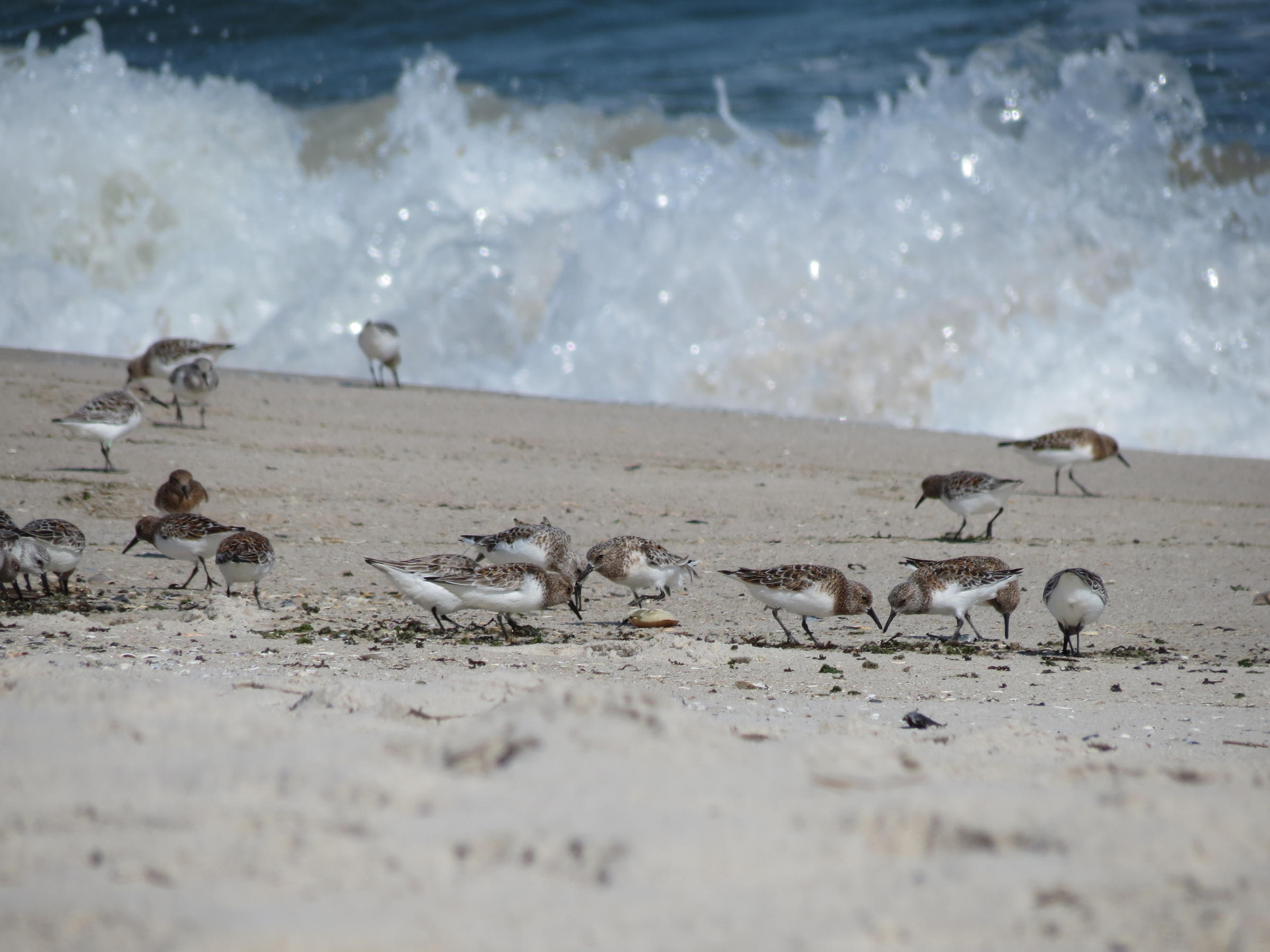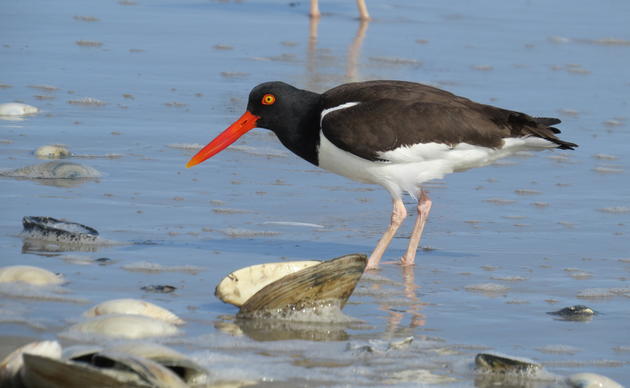Why are beaches important to birds?
Coastal environments support some of the world's highest diversities of birds as well as some of its largest migratory and breeding congregations. A focus of Audubon New York's Long Island Bird Conservation Program is beach-nesting birds and their conservation issues. Long Island provides critical habitat for beach-nesting birds that are found in few other places in the state. Of particular concern is the federally threatened, state endangered Piping Plover. This region supports nearly 400 breeding pairs of Piping Plovers that make up approximately 20% of the Atlantic Coast population and over 10% of the global population.
Other priority beach-nesting species on Long Island include the Least Tern, Roseate Tern, Common Tern, American Oystercatcher, and Black Skimmer. Additionally, Long Island beaches provide habitat for migratory shorebirds. Many species of shorebird stop on the beaches of Long Island during migration en route to breeding or wintering grounds. Shorebirds often travel long distances between their breeding and wintering grounds and survival during all portions of their annual life-cycle is required to maintain stable populations of these species. Some of the priority migratory species that use the beaches of Long Island are: Red Knot, Sanderling, and Semipalmated Sandpipers.
Threats to beach-nesting and migratory shorebirds include human activities such as beach development and incompatible recreation (e.g. pedestrian access in nesting areas and use of vehicles on beaches) that directly impact nesting habitat quality, nest success, and the ability to properly feed or rest during migration. Shorebirds also face a number of natural threats such as predators and extreme weather conditions.
To learn more about Long Island's beach-nesting birds download our beach-nesting birds brochure: LI Beach-nesting Birds
Or visit: Be a Good Egg NJ/NY and our Be a Good Egg NJ/NY Facebook page.
What do we do?
Initiated in 2007, Audubon New York's Long Island Bird Conservation Program (LIBCP) focuses its efforts on coastal bird conservation. Beach-nesting birds and their conservation issues have been at the core of our coastal work.
Goals of our work:
The goal of our coastal work is to increase or maintain populations of beach-nesting and migratory coastal birds that use the beaches of Long Island during any part of their annual life cycle. To attain this goal we will:
Ensure high quality habitats for nesting, foraging, and migration stopoversReduce threats to beach-nesting and migratory shorebirds through stewardship, social marketing, education, and outreachEnhance monitoring and long-term protection for plovers, terns, and other priority beach-nesting birds on Long Island.Address the issues associated with predators, increase public awareness of predators that have the greatest impact on vulnerable beach-nesting birds, and identify solutions that reduce those threats.
Current Coastal Work:
Stewardship:
In partnership with USFWS, NYSDEC, and NY State Parks we protect and monitor Piping Plovers, Least Terns, and American Oystercatchers at six nesting sites on Long Island. Our efforts include installing signs and fencing around nesting areas, erecting predator exclosures at Piping Plover nests, monitoring and reporting reproductive success, and interacting with beach users.
Education and Outreach:
Education and outreach are important parts of beach-nesting bird conservation. We are partnering with New Jersey Audubon and New York City Audubon on a "Be a Good Egg NJ/NY" initiative, of which education and outreach are major components. In addition to other activities, we take education and outreach straight to the beaches to help support Piping Plovers, Least Terns, and other beach-nesting species. This summer we will have staff and volunteers at beach-nesting bird sites educating beach-goers and promoting compatible recreation through a "Share the Beach" pledge.
Citizen Science:
Migration is a critically important time for shorebirds, and as part of our "Be a Good Egg" initiative, we are working with New Jersey Audubon and New York City Audubon to better understand shorebird migration in our region. We do this through working with volunteers to implement International Shorebird Surveys on Long Island. During spring and fall migration, volunteers and staff survey and record shorebirds and disturbance levels at key sites.
Get Involved!
Shorebird Migration Volunteers Needed:
Maintaining healthy populations of beach-nesting birds requires that we understand and protect these species during all portions of their annual life-cycle: nesting, migrating, and wintering. If you are an experienced birder on Long Island and can identify migratory shorebird species, you can help us track our beach-nesting birds and other shorebirds as they migrate. To learn more click on the following protocol and data sheet or contact Amanda Pachomski:
Migration Survey Protocol click here
Migration Survey Data Sheet click here
Become an Outreach Docent!
Protecting beach-nesting birds includes minimizing threats that the birds face from human disturbance. Education and outreach play an important role in helping decrease the disturbance these species experience on their breeding grounds. If you live on Long Island and are interested in becoming an outreach docent contact Kerri Dikun for more information.
Take the pledge!
Visit http://www.goodeggny.org/ to learn more about shorebirds and pledge to do your part to protect them!
Recent News:
Follow our Be a Good Egg Blog to see our latest news.
Donate to Audubon
Help secure the future for birds at risk from climate change, habitat loss and other threats. Your support will power our science, education, advocacy and on-the-ground conservation efforts.





